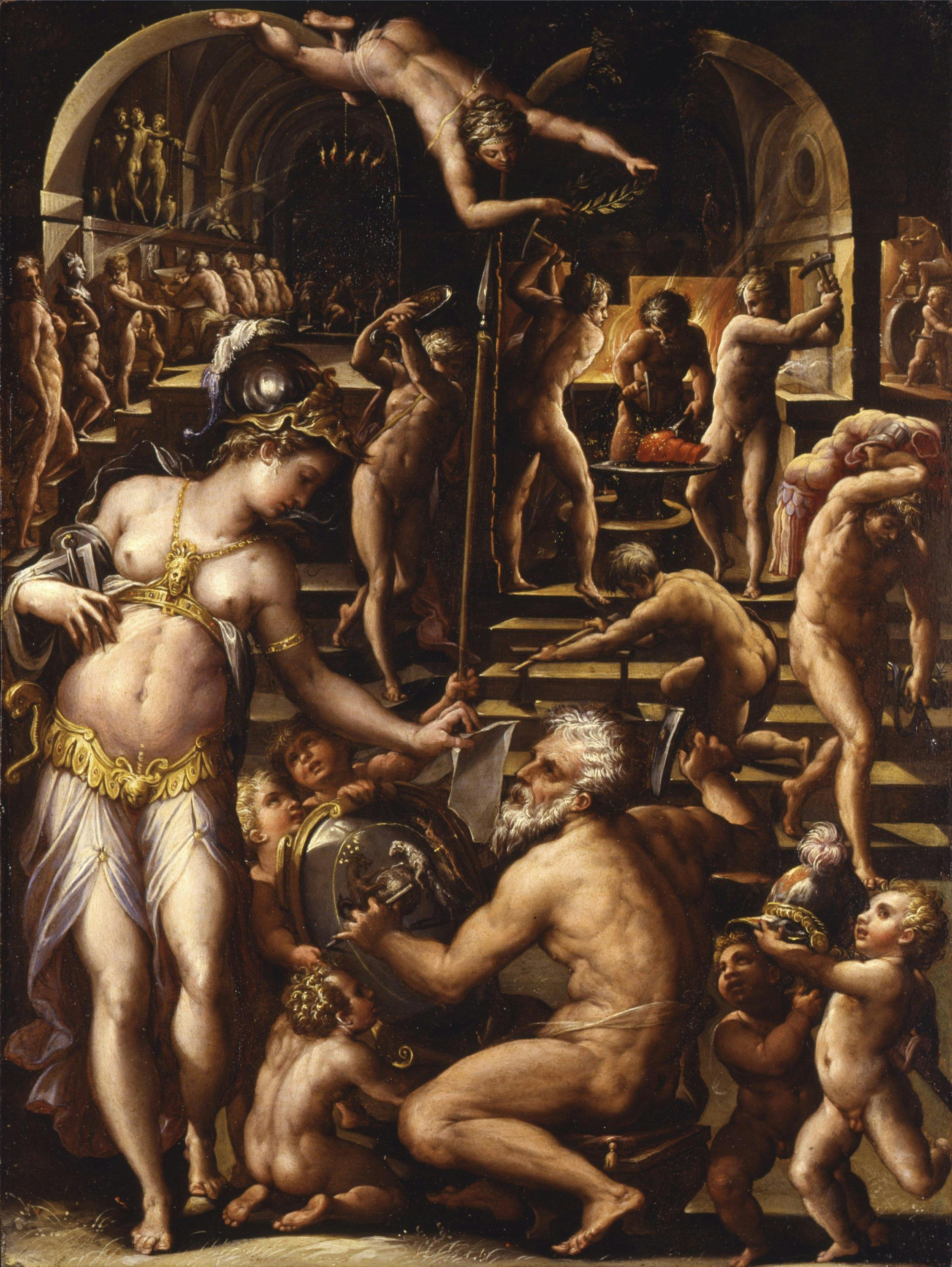Vulcan’s Forge
Giorgio Vasari (Arezzo 1511 - Firenze 1574)
This small painting is part of a series created by Vasari and the artists in his circle for Francesco I de' Medici, Grand Duke of Tuscany, featuring subjects based on the writings of Don Vincenzo Borghini, the learned prior of the Ospedale degli Innocenti, and the painter’s friend. Finding inspiration in episodes taken from classical mythology and Ovid’s Metamorphoses, Borghini had developed a series of “inventions” laced with complicated allegorical meanings designed to celebrate the emerging talents and the great Medici governance. Francesco I, who had an introverted and contemplative temperament, was particularly fond of this genre of painting destined for private use: in fact, only a few very cultured people were capable of understanding its symbolic, often obscure meanings. Here, it is important to remember that Borghini would also go on to devise the complicated iconographic plan of the studiolo that the prince would commission in Palazzo Vecchio a few years later. Vulcan’s Forge also came under that category of subjects that could be interpreted from the perspective of alchemy, a branch of philosophy of which Francesco was a passionate scholar.
The subject of the painting is inspired by a passage from Homer’s Iliad, in which the poet describes Vulcan, the god of fire, who is intent on forging Achilles’ sword. Sitting in the foreground, the god is showing Minerva the weapons that have just been created. But here, rather than the figures described in Homer’s poem, the shield hosts the images of a ram and a goat holding a globe. The former is the star sign of Francesco I and the latter is the rising sign of his father, Cosimo I, who had chosen it as his family emblem because it had been the star sign of the Emperor Augustus. This detail sheds light on the allegorical meaning - the political-dynastic propaganda of the Grand Dukes - that inspires the choice of the subject. Therefore Minerva, who is holding a compass and a goniometer, and is holding out a drawing to Vulcan, represents ingenuity, while the blacksmith-god at work symbolises Technique. In the background, a number of young nude men, sitting at their benches, are busy copying the vases and ancient statues placed in the niches above them: among these, we recognise a group of sculptures depicting the Three Graces, here an allusion to the arts of Drawing, namely Painting, Sculpture and Architecture. On the right, other characters are trying their hand at metalworking, following the example set by Vulcan. The painting therefore symbolises the union of the ideational and manual skills, inseparable components of all the arts and a theme particularly dear to Cosimo, whose hobbies included the mechanical arts. Peace hovering overhead, holding an olive branch, is a reference to the prosperity experienced in Florence under the leadership of the Medici family. And indeed, it is worth remembering that, in 1563, Cosimo I had founded the Academy of Drawing Arts, a place where young students closely studied ancient statues and fine-tuned the technique of drawing, considered the foundation of all the arts.
